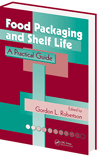FPA has developed a new fact sheet, Flexible Packaging Overview, which will be used as part of the FPA strategic engagement program. It outlines basics about flexible packaging including industry size, products, sustainability and product protection benefits.
The fact sheet looks at energy use and emissions for flexible packaging compared to other packaging formats. On a per-ounce-of-product basis, flexible pouches show lower energy inputs and fewer emissions than other choices.
Flexible packaging’s sustainability benefits also include:
- Materials and production advances that cut the weight of flexible packaging by 40 percent from earlier structures.
- Flexible packaging offers resource recovery options including the generation of engineered energy feedstock.
- The fact sheet also cites the flexible packaging industry’s partnerships with multiple stakeholders in efforts to expand waste recovery options.
Cutting Food Waste
Another way flexible packaging fits current social needs is in the area of food waste. A recent study by the National Resources Defense Council shows that up to 40 percent of food in the United States is wasted. Flexible packaging demonstrates a capacity that reduces waste by extending shelf life.
- Shelf life of cucumbers wrapped in flexible packaging goes from three days to 14 days in-store.
- Ripening of bananas slows in flexible packaging, and shelf life extends from 15 to 35 days.
- Improvements in film barrier for refrigerated foods now keep meat fresh for up to 23 days longer.
The fact sheet concludes that the flexible packaging industry is growing because it creates unique solutions for today’s lifestyle.
For More Info
Go to www.flexpack.org and click on Flexible Packaging Industry Overview to download the complete fact sheet.









